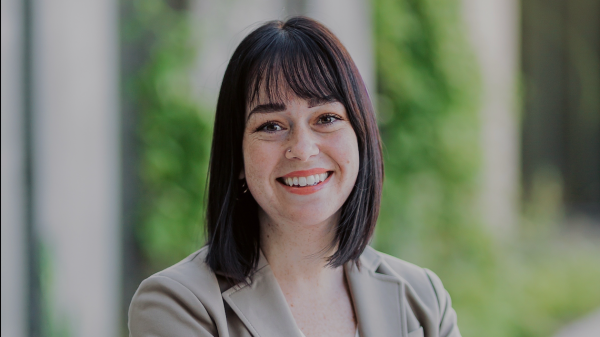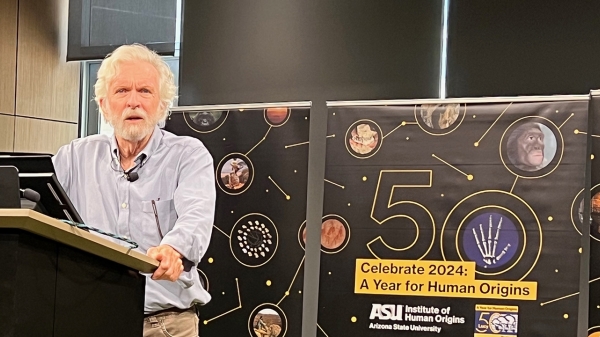ASU partners on first-of-its-kind $90M NSF research hub for transformational learning, education research
SafeInsights to bring together digital learning platforms and researchers to enable studies that inform innovation in teaching and learning — while protecting students’ privacy

Photo by Deanna Dent/ASU
Access to better data leads to better research. When it comes to data about personalized learning, the more researchers know about students' learning behaviors, the more meaningful the research findings.
Protecting the identity of students is paramount in educational research. Historically, it has been difficult for researchers to acquire data at all.
To that end, Arizona State University is part of the newly announced U.S. National Science Foundation (NSF) SafeInsights, a five-year, $90 million research and development infrastructure for inclusive education research.
Led by OpenStax-Rice University, SafeInsights is a large-scale education research hub that will safely connect digital learning platforms and educational institutions to learn about learning.
This initiative represents the National Science Foundation’s largest single investment in R&D infrastructure for education at a national scale, and SafeInsights will be the first national infrastructure of its kind.
SafeInsights includes a multidisciplinary network of 80 collaborating institutions and partners, including major digital learning platforms that currently serve tens of millions of students. ASU is receiving $4.9 million, the largest portion of funding for partner institutions in the project.
“There are two primary reasons that this project is important to learners,” said Danielle McNamara, executive director of the ASU Learning Engineering Institute, the principal investigator for ASU, and one of four co-PIs for SafeInsights.
“The first reason is that this is the first national infrastructure geared toward improving students' learning outcomes by creating the data infrastructure necessary to capture learning processes at scale and across multiple complex contexts. The second reason it is important is because it does so while fully protecting the identity of the student. Students can contribute to our understanding of learning, and how to improve learning, without risk of their being identifiable within a dataset.”
SafeInsights flips the usual research model. Instead of researchers getting copies of sensitive student data, they submit their analyses to SafeInsights. SafeInsights runs these analyses within the secure environments where the data is originally stored (schools and platforms) and only provides researchers with aggregate results.
Nothing like this currently exists, McNamara said. Learning data are largely owned by large corporations — inaccessible to researchers, who are restricted to small datasets with restricted information about students. SafeInsights promises deeper insights into the effects of tools and learning opportunities across a range of contexts — not just how students performed in a given course, but the effect across multiple courses, multiple years, even across different universities.
“We want to be able to evaluate theories that have been tested in very, very limited context,” McNamara said. “We want to be able to test those at scale and across multiple contexts.”
According to national polls conducted by the Data Quality Campaign, 86% of teachers recognize the importance of research in effective teaching. However, the majority of teachers must individually piece together research-informed teaching and learning strategies, often with limited resources.
SafeInsights studies will help researchers and educators understand how students learn best, no matter who they are, what they are learning or how they are learning. The insights gained can lead to the development of better, research-informed teaching tools and practices, promoting educational equity.
“Better research leads to better learning. SafeInsights will enable a community of researchers to safely study large, diverse groups of students over time as they use different learning platforms,” said Richard Baraniuk, Rice professor, OpenStax founder and project lead. “Researchers will be able to explore new ways to understand learning for students at all levels of education, which can lead to unprecedented discoveries and next-level innovations.”
SafeInsights stringently protects learner privacy. SafeInsights uses a unique technique, called “secure data enclaves,” which unlocks valuable insights without revealing any student information to researchers or moving student information from the learning tools that it safely lives in today.
“ASU has been building the necessary foundations for this project for the past decade, first in building the data warehouse, and more recently in building Learning@Scale, a data infrastructure that provides researchers the ability to access data to answer critical questions about learning in the context of higher education,” McNamara said. “SafeInsights will connect ASU to other institutions and digital learning platforms across the U.S., creating a web of insights to inform education, while fully protecting the anonymity of our learners. This is a monumental step in acknowledging the importance of making data-informed decisions in education.
“This fundamentally changes how researchers as well as educators and policymakers will be able to better understand the impact of what we do in our educational environments. And so that fundamentally impacts the student because it will help us to improve education in the United States.”
To successfully undertake such a large and complex initiative, it is imperative to foster collaboration across the university landscape. ASU's Office of the University Provost, Enterprise Technology and EdPlus, among others, have partnered with the Learning Engineering Institute, leveraging this grant to drive forward the university’s collective mission towards the ASU Charter to help our students succeed.
To learn more about SafeInsights and stay informed of future progress, visit safeinsights.org.
More University news

Couple with more than 60 years of service to ASU establish student scholarships
Ken Hollin and Michelle Brown-Hollin met, worked together and married each other at Arizona State University. Now, they will both retire in May after serving the university for many years. Together…

First-generation grad earns master's degree in social justice and human rights
Editor’s note: This story is part of a series of profiles of notable spring 2024 graduates. Rockell Schmidt comes across as a passionate and driven individual with a strong commitment to social…

ASU faculty member elected to American Academy of Arts and Sciences
Arizona State University Professor Robert Boyd is among those newly elected to the American Academy of Arts and Sciences, one of the oldest learned societies in the United States. Boyd is one of 250…